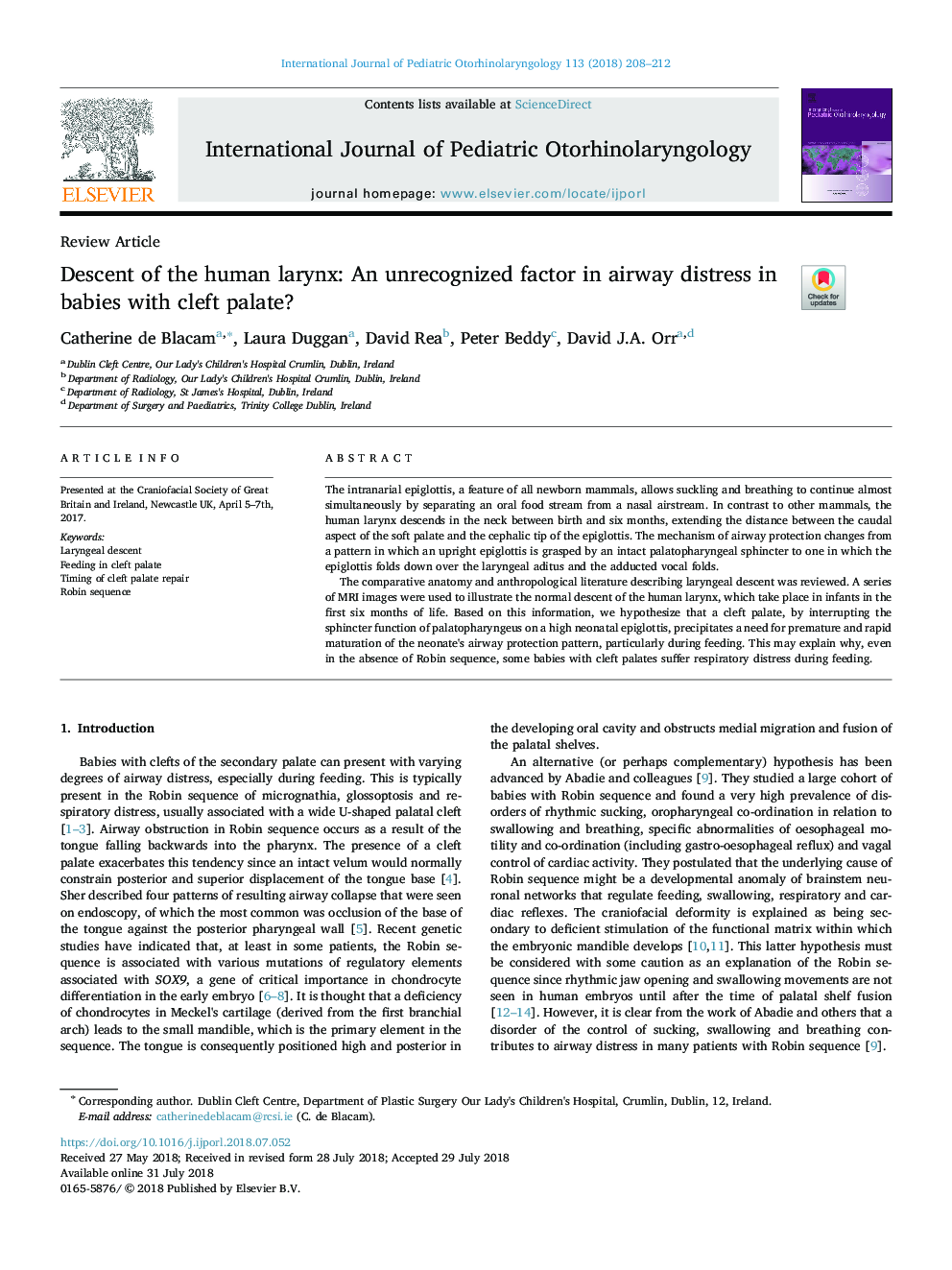| Article ID | Journal | Published Year | Pages | File Type |
|---|---|---|---|---|
| 8806073 | International Journal of Pediatric Otorhinolaryngology | 2018 | 5 Pages |
Abstract
The comparative anatomy and anthropological literature describing laryngeal descent was reviewed. A series of MRI images were used to illustrate the normal descent of the human larynx, which take place in infants in the first six months of life. Based on this information, we hypothesize that a cleft palate, by interrupting the sphincter function of palatopharyngeus on a high neonatal epiglottis, precipitates a need for premature and rapid maturation of the neonate's airway protection pattern, particularly during feeding. This may explain why, even in the absence of Robin sequence, some babies with cleft palates suffer respiratory distress during feeding.
Keywords
Related Topics
Health Sciences
Medicine and Dentistry
Otorhinolaryngology and Facial Plastic Surgery
Authors
Catherine de Blacam, Laura Duggan, David Rea, Peter Beddy, David J.A. Orr,
